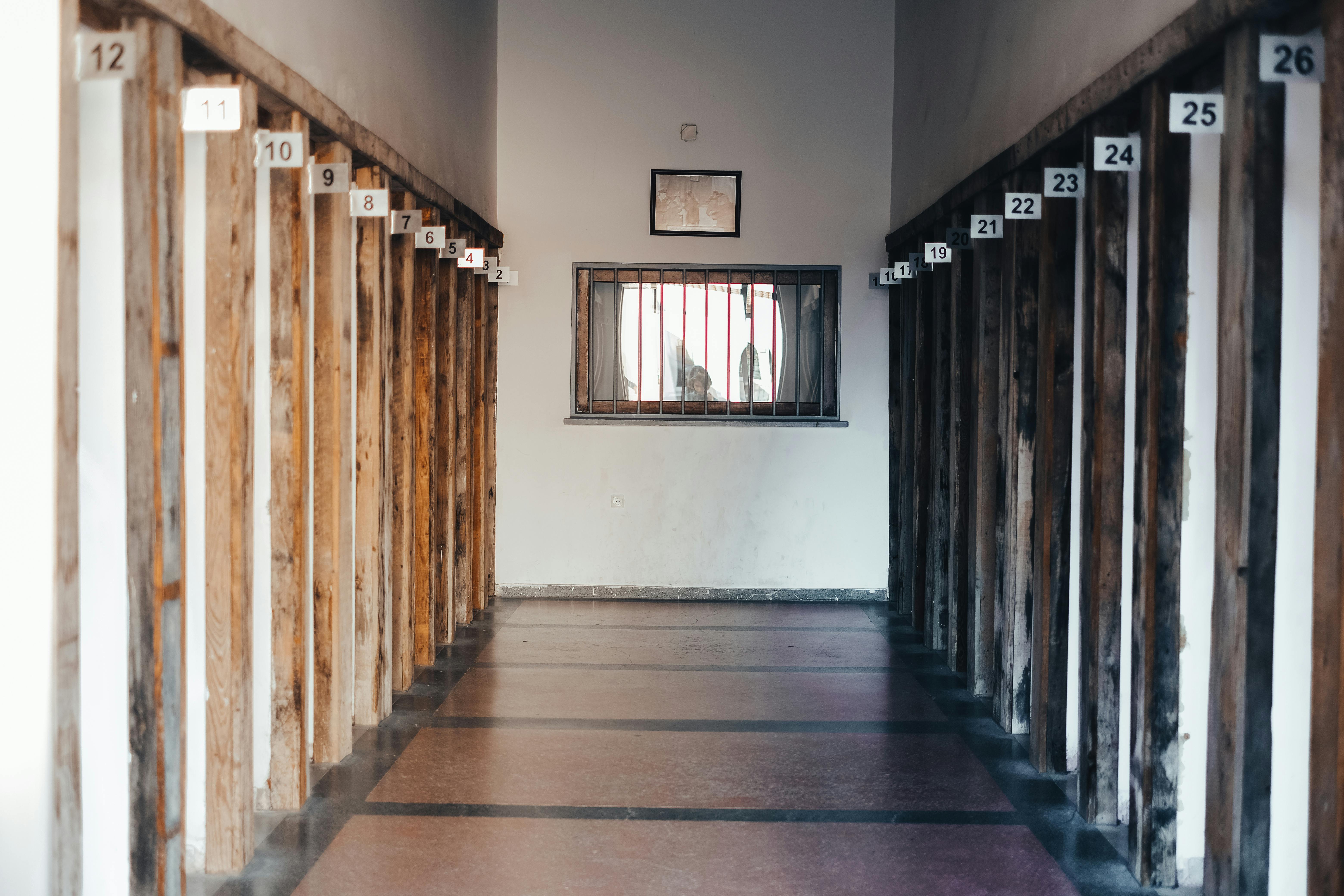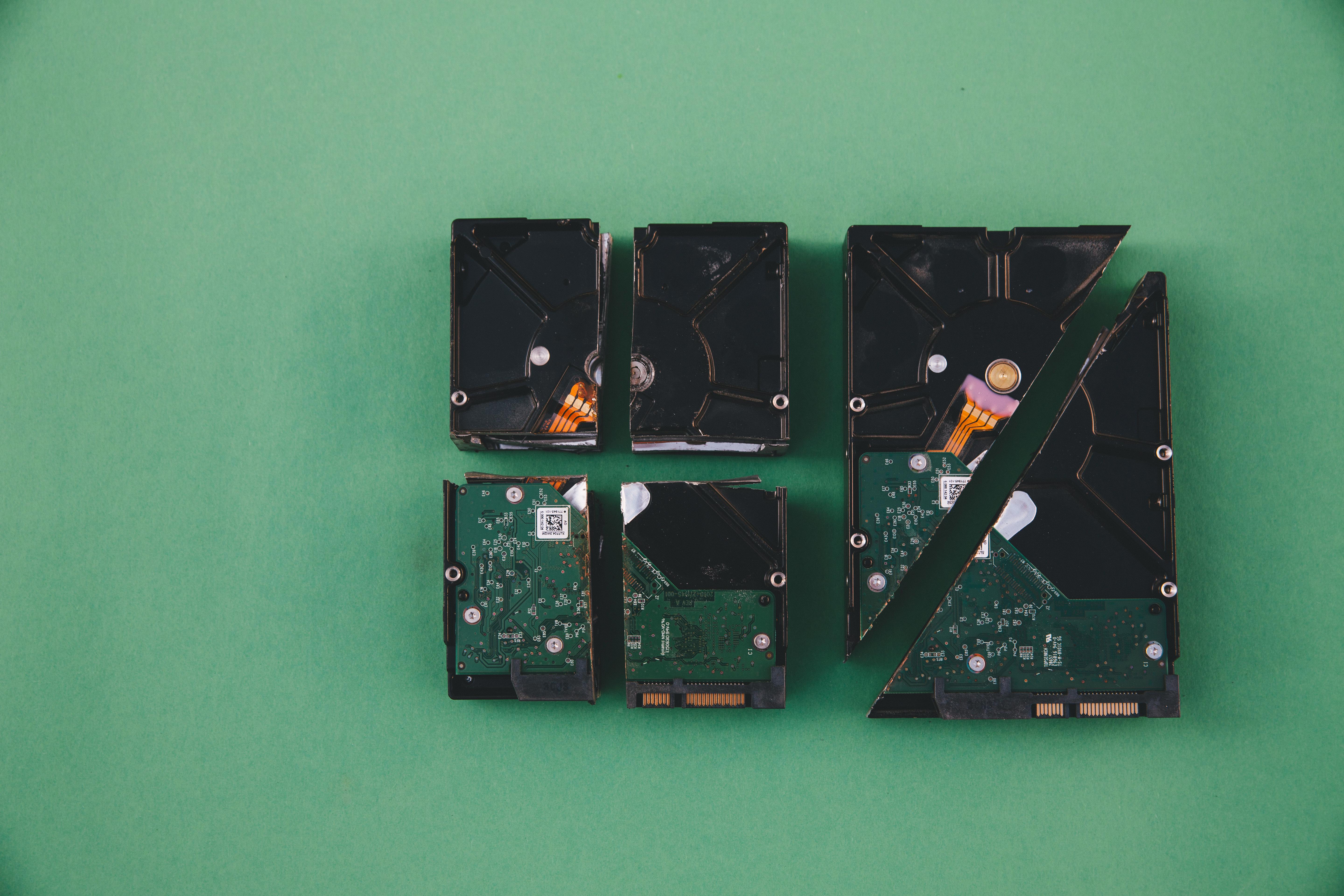Are you struggling with Windows 11 network folder issues? You’re not alone! Many users encounter frustrating problems when trying to access shared folders on their network. In this article, we’ll explore effective strategies to troubleshoot Windows 11 network folder problems so you can regain seamless access to your files. Whether it’s connectivity problems, permission errors, or just plain confusion, we’ve got you covered with practical tips that can solve your issues quickly.
First off, understanding the common network folder issues in Windows 11 is crucial. Are you facing errors while connecting? Or maybe your shared folders aren’t visible? These challenges can stem from a variety of sources, including misconfigured settings, outdated drivers, or even firewall restrictions. By identifying the root cause, you can apply the right troubleshooting steps. In the following sections, we’ll break down simple yet effective solutions that will empower you to tackle these issues head-on.
Moreover, ensuring your Windows 11 network settings are optimized can make a significant difference in your user experience. Did you know that sometimes, a simple restart can resolve network glitches? However, if basic fixes don’t work, we’ll also delve into advanced methods like adjusting your network discovery settings and checking your sharing options. So, if you’re ready to unlock the full potential of your network folders and eliminate those pesky issues, keep reading! You’ll find all the insights you need to navigate the complexities of Windows 11 network folder troubleshooting with ease.
10 Proven Tips to Fix Common Windows 11 Network Folder Issues Instantly

Windows 11 has brought many new features and improvements, but with it comes some pesky network folder problems that users encounter. These issues can be frustrating and can disrupt workflow, so knowing how to fix them quickly is essential. Here are 10 proven tips to fix common Windows 11 network folder issues instantly.
Check Your Network Connection
First things first, make sure that your internet connection is stable. Sometimes, network folders may not show up or work properly if your connection is weak. You can run the built-in network troubleshooter by going to Settings > Network & Internet > Status, then click on “Network troubleshooter.” This tool can detect issues and even suggest fixes.
Restart Your Computer
It might sound simple, but restarting your computer can solve many problems. When you restart, Windows refreshes the system and often clears temporary files or glitches that could be causing the network folder issues. Just like a reset button, it can bring everything back to normal.
Disable and Enable Network Discovery
Network Discovery is a feature that allows your PC to find other devices on the network. If this feature is turned off, you may have trouble accessing network folders. Go to Control Panel > Network and Sharing Center > Change advanced sharing settings, and make sure “Turn on network discovery” is selected. Then, save the changes.
Check File Sharing Settings
Sometimes, file sharing settings become misconfigured. To check, right-click on the folder you want to share, select Properties, then navigate to the Sharing tab. Ensure that the sharing settings are correct, and that the folder is shared with the proper users.
Update Network Drivers
Outdated drivers can lead to connectivity issues. Go to Device Manager, find your network adapter, right-click, and select “Update driver.” Windows will search for the latest drivers to ensure everything is up to date. Keeping drivers current is crucial for overall performance.
Turn Off Antivirus or Firewall Temporarily
Your antivirus or firewall software can sometimes block access to network folders. Try disabling it temporarily to see if this resolves the problem. If it does, you may need to adjust the settings in your security software to allow the network folder access.
Use the Command Prompt
For those who are more tech-savvy, using Command Prompt can help. You can flush the DNS cache by typing “ipconfig /flushdns” and hitting enter. This can resolve some issues related to network connections. Additionally, you can use “net use” commands to map network drives correctly.
Verify Network Credentials
If you’re prompted for a username and password when accessing network folders, make sure that you’re entering the correct credentials. Sometimes, saved credentials may be incorrect. Go to Control Panel > User Accounts > Credential Manager, and check if the credentials are accurate.
Check for Windows Updates
Windows updates often include bug fixes and improvements. Make sure your system is fully updated by going to Settings > Windows Update and checking for updates. Installing the latest updates can fix various issues, including network folder problems.
Reset Your Network Settings
If all else fails, you can reset your network settings. This will remove all network adapters and reset networking components to their original settings. Go to Settings > Network & Internet > Advanced network settings > Network reset. This should be a last resort, as it will require you to reconnect to your network and reconfigure settings.
By following these steps, you can effectively troubleshoot Windows 11 network folder issues. Each tip aims to address specific problems, making it easier to regain access to your essential files. Don’t let network issues slow you down; try these troubleshooting methods today and get back to what matters most.
How to Diagnose Windows 11 Network Folder Connectivity Problems Like a Pro

When you work on a Windows 11 system, running into network folder connectivity problems can be pretty frustrating. Many people struggle with these kinds of issues, and it can make you feel like you’ve lost control over your files and folders. Fortunately, diagnosing and troubleshooting Windows 11 network folder issues doesn’t have to be a herculean task. With some practical tips, you can navigate these obstacles like a pro.
Understand Your Network Setup
Before diving into troubleshooting, it’s essential to understand how your network is set up. Is it a home network, or are you connecting to a business network? Knowing your environment helps in identifying the root cause of connectivity problems. If you are using a router, check if it’s functioning properly. Here are some quick checks you can do:
- Ensure all cables are securely plugged in.
- Restart your router to refresh the connection.
- Verify that other devices can access the network folders.
Common Symptoms of Network Folder Issues
You might experience various symptoms when dealing with network folder connectivity problems. Recognizing these symptoms can save time during the troubleshooting process. Some common symptoms could include:
- Inability to access shared folders.
- Slow performance when accessing network folders.
- Error messages like “Network path not found” or “Access denied.”
Troubleshooting Steps to Follow
Let’s breakdown some effective steps you can take to troubleshoot Windows 11 network folder issues.
-
Check Network Discovery
- Make sure that network discovery is turned on. You can do this by going to Settings > Network & Internet > Advanced network settings.
- Toggle on the option for “Network discovery” under the “File and printer sharing” section.
-
Validate Folder Permissions
- Ensure that you have the necessary permissions to access the folder.
- Right-click the folder, select “Properties,” and check the “Sharing” tab.
-
Use the Windows Network Troubleshooter
- Windows 11 has built-in troubleshooting tools. Go to Settings > Update & Security > Troubleshoot > Additional troubleshooters.
- Run the “Network Adapter” troubleshooter to identify and fix issues automatically.
-
Update Network Drivers
- Outdated or corrupt drivers can lead to connectivity issues.
- Go to Device Manager, find your network adapter, right-click it, and select “Update driver.”
-
Disable Firewall Temporarily
- Sometimes, firewalls can block access to network folders.
- Temporarily turn off your firewall to see if it resolves the issue. Don’t forget to turn it back on after testing!
Additional Tips
- Check for Windows Updates: Having the latest updates ensures your system is running optimally.
- Ping the Network Folder: Use the Command Prompt to ping the folder’s IP address. This can help determine if the folder is reachable.
- Verify IP Configuration: Make sure your IP settings aren’t conflicting with other devices on the network.
Recap of Key Points
- Always start with the basics: check your network setup and cables.
- Be aware of common symptoms to quickly identify issues.
- Utilize built-in troubleshooting tools and check settings like network discovery and folder permissions.
In the end, dealing with Windows 11 network folder connectivity problems might feel overwhelming at times, but with these tips and a bit of patience, you can navigate through them effectively. Troubleshooting becomes simpler once you understand where to start and how to approach the issue methodically. You’ll be back to accessing your network folders without a hitch in no time!
Step-by-Step Guide to Share and Access Network Folders in Windows 11

If you are a Windows 11 user, sharing and accessing network folders can be a bit tricky, especially if you are not familiar with the right steps. This guide will provide you with a step-by-step approach to share and access network folders in Windows 11, and also troubleshoot any issues that might occur.
Step-by-Step Guide to Share and Access Network Folders in Windows 11
-
Open File Explorer: You can do this by clicking the folder icon in the taskbar. You can also press Windows + E keys together for faster access.
-
Choose the Folder to Share: Navigate to the folder you want to share. Right-click on it, and select “Properties.”
-
Go to Sharing Tab: In the properties window, click on the “Sharing” tab. Here, you will see options for sharing your folder.
-
Click on Share: Click on the “Share…” button. A new window will pop up, allowing you to select users with whom you want to share the folder.
-
Select Users: You can type the name of the user or choose them from the drop-down list. You can also set permission levels, such as “Read” or “Read/Write.”
-
Share the Folder: Once you have selected users, click on the “Share” button. Windows will then provide you with a link to the shared folder which you can send to others.
-
Accessing the Shared Folder: To access the shared folder from another computer, open File Explorer, go to “Network” and look for the computer name that has the shared folder. Click on it to see the shared folders.
Troubleshoot Windows 11 Network Folder Issues With These Tips
Sometimes, you might face issues when trying to share or access network folders. Here are some troubleshooting tips that could help:
-
Check Network Connection: Ensure that both computers are connected to the same network. Without a stable connection, access will be denied.
-
Enable Network Discovery: Go to Settings > Network & Internet > Advanced network settings. Make sure that Network Discovery is turned on.
-
Turn Off Firewall Temporarily: Sometimes, the firewall may block folder sharing. You can temporarily disable it to see if that is the issue.
-
Verify Sharing Permissions: Double-check the sharing permissions to ensure that users have the right access levels.
-
Update Windows: Ensure that your Windows 11 is up to date. Sometimes, bugs in older versions can cause sharing issues.
-
Restart Network Devices: Restart your router or modem. This can resolve many connectivity problems.
-
Check for Software Conflicts: Sometimes, security software can interfere with network sharing. Temporarily disabling such software might help.
Common Issues and Fixes
| Issue | Description | Quick Fixes |
|---|---|---|
| Cannot find shared folder | The folder isn’t visible in the network. | Check network discovery settings. |
| Access denied error | You don’t have permissions to access. | Verify sharing permissions. |
| Slow access to folders | Folders take long to open or access. | Restart your network devices. |
When sharing and accessing network folders in Windows 11, understanding the process and troubleshooting common issues can save you a lot of time and frustration. Follow these steps carefully, and you should be able to share files easily. If problems persist, considering checking online forums or Microsoft’s support for more detailed assistance. Don’t hesitate to explore and experiment, as network settings can sometimes be a bit finicky. Don’t give up, and happy sharing!
Top 5 Hidden Settings in Windows 11 That Can Solve Your Network Folder Woes

Are you tired of dealing with frustrating network folder issues in Windows 11? You’re not alone! Many users struggle with accessing shared files and folders, which can be a real pain when you’re trying to work efficiently. Fortunately, there’s a treasure trove of hidden settings in Windows 11 that can help you troubleshoot your network folder woes. Here are the top 5 hidden settings that could solve your problems.
1. Network Discovery Settings
First off, you gotta make sure that Network Discovery is turned on. This feature allow your computer to see other devices in the network, and vice versa. To check if it’s on, follow these steps:
- Open the Settings app.
- Go to Network & Internet.
- Click on Advanced Network Settings.
- Select Network Discovery and ensure it is enabled.
If it was off, turn it on and you might see a difference right away.
2. SMB Protocol Settings
Windows 11 uses the SMB (Server Message Block) protocol for file sharing. Sometimes, the SMB feature is not enable by default. To fix this, do the following:
- In the Control Panel, navigate to Programs.
- Click on Turn Windows features on or off.
- Look for SMB 1.0/CIFS File Sharing Support and check it.
Note that enabling SMB 1.0 could pose security risks, so be careful if you choose to enable it. Always consider updating your devices to support newer versions.
3. Firewall Configuration
Your Windows Firewall might be blocking access to network folders. If you suspect this, you can alter your firewall settings. Here’s how:
- Go to Control Panel > System and Security > Windows Defender Firewall.
- Click on Allow an app or feature through Windows Defender Firewall.
- Find File and Printer Sharing and make sure it’s checked for both Private and Public networks.
Adjusting firewall settings can often resolve connectivity issues, but remember to be cautious about what you allow through.
4. Credential Manager
Sometimes, old or incorrect credentials can cause problems. Windows stores passwords for network shares in the Credential Manager. To fix this:
- Type Credential Manager in the search bar and open it.
- Check under Windows Credentials for any old entries related to the network folder.
- Remove those entries and try accessing the folder again.
This simple step can clear up access problems that are rooted in outdated information.
5. Network Reset
If all else fails, consider doing a network reset. This will reset all your network adapters and set networking components back to their original settings, which can often fix stubborn issues. Here’s how to do it:
- Open Settings.
- Select Network & Internet.
- Scroll down to Network reset and click on it.
- Follow the prompts to reset.
Keep in mind that resetting your network settings will erase all saved Wi-Fi passwords, so be prepared to re-enter them.
These settings and adjustments can significantly improve your experience with network folders in Windows 11. By tweaking these hidden options, you might find that accessing shared files becomes much smoother. Troubleshooting Windows 11 network folder issues doesn’t have to be a nightmare. With these tips, you can regain control and boost your productivity in no time! Don’t let network frustrations hold you back — dive into these settings and enjoy a seamless file-sharing experience.
Are You Facing Windows 11 Network Folder Access Denied Errors? Here’s How to Fix It!

Are you having trouble with Windows 11 and getting those annoying Network Folder Access Denied errors? Don’t worry, you’re not alone. Many users in New York and beyond facing this issue. It can be really frustrating when you try to access files and folders over a network, but you just can’t. This article will help you troubleshoot Windows 11 network folder issues and provide some practical tips for resolving access denied errors.
Understanding the Issue
Network folder access denied errors usually pop up due to permissions, network settings, or configuration problems. Sometimes, it might just be a simple mistake in the file sharing settings. Other times, it could be a user account issue or a firewall blocking the access. Let’s look at some common reasons for these errors:
- Permissions: If you don’t have the right permissions set on a folder, Windows will not let you access it.
- Network Discovery: If network discovery is turned off, your computer may not see other devices on the network.
- Firewall Settings: The firewall could be blocking file sharing and access to network folders.
- User Account Control (UAC): UAC settings may limit access to shared folders.
Tips to Fix Access Denied Errors
-
Check Folder Permissions:
- Right-click on the folder you’re trying to access, then select “Properties”.
- Navigate to the “Security” tab.
- Make sure your user account is listed and has “Full Control” permissions. If not, you can edit the permissions.
-
Enable Network Discovery:
- Open the Control Panel, then go to “Network and Sharing Center”.
- Click on “Change advanced sharing settings”.
- Under your current profile, make sure “Turn on network discovery” is selected.
-
Adjust Firewall Settings:
- Go to “Windows Security” and click on “Firewall & network protection”.
- Select “Allow an app through firewall”.
- Ensure that “File and Printer Sharing” is checked for both private and public networks.
-
Modify User Account Control Settings:
- Search for “User Account Control” in the Windows search bar.
- Click on “Change User Account Control settings”.
- Lower the slider to “Never notify” and restart your computer.
Advanced Troubleshooting
If the above steps don’t work, there are more advanced methods you can try:
-
Use Command Prompt:
- Open Command Prompt as an administrator.
- Use the command
netsh advfirewall resetto reset firewall settings. - Run
sfc /scannowto check for system file integrity issues.
-
Check Network Settings:
- Make sure you are connected to the right network.
- Go to “Settings”, then “Network & Internet”, and ensure you are on the correct Wi-Fi or Ethernet network.
Common Errors and Solutions
Here’s a quick reference for common errors you might see and how to fix them:
| Error Message | Possible Cause | Suggested Fix |
|---|---|---|
| “Access Denied” | Insufficient permissions | Adjust folder permissions |
| “Network Path Not Found” | Incorrect path or network issues | Verify the network connection and path |
| “You Do Not Have Permission” | User account issues | Check user permissions |
Facing Windows 11 network folder access denied errors can be a pain, but with the right troubleshooting steps, you can regain access to your files. It’s all about checking permissions, network settings, and being sure that everything is configured correctly. Remember, technology can be unpredictable, but a little patience and these tips can go a long way in resolving your issues. Don’t give up, your files are just a few clicks away!
Conclusion
In conclusion, troubleshooting network folder issues in Windows 11 can be tackled effectively by following a systematic approach. We discussed essential steps such as ensuring your network connection is stable, verifying sharing settings, configuring firewall and antivirus settings, and checking permissions for shared folders. Additionally, utilizing built-in tools like the Network Troubleshooter can help identify and resolve connectivity problems swiftly. It’s crucial to keep your system updated to minimize compatibility issues and enhance performance. If you continue to experience difficulties, consider reaching out to online forums or Microsoft’s support channels for further assistance. By implementing these strategies, you can restore seamless access to network folders and improve your overall productivity. Don’t let network issues slow you down; take action today to resolve any problems and enjoy a smoother Windows 11 experience.

